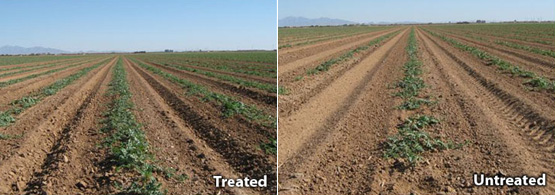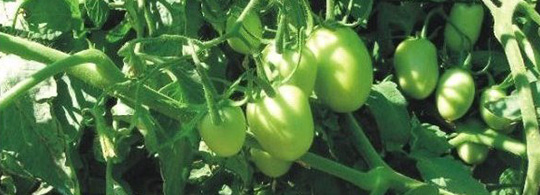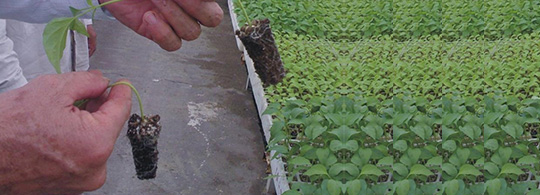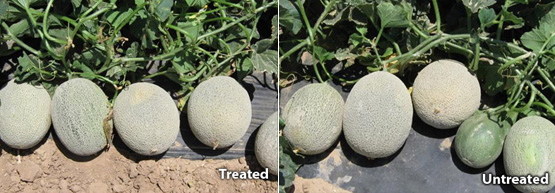Ferticell Universal 0-0-1 Liquid Alga
| TECNICAL DATA SHEET | |
|---|---|
| Ferticell Universal 0-0-1 liquid Alga | Download technical Data Sheet |
FERTICELL UNIVERSAL 0-0-1 is an ecological liquid fertilizer of unicellular freshwater algae, used for both foliar applications and fertigation. It is used to increase production (kg), with optimized quality (size and consistency). When mixed with agrochemicals, it prevents the plant from stress generated by the aggressiveness of the chemical molecules applied.
FERTICELL UNIVERSAL 0-0-1 contains unicellular algae, being completely neutral and biologically active. Thanks to its effect as a vehicle or carrier, it helps to enhance the effects of fertilizers and phytosanitary products, both organic and conventional. Unicellular-algae are themselves a source of nutrients, help plants make better use of nutrients existing in their tissues and on the soil, improving the intercellular exchange of nutrients. The final result in terms of plant growth is a higher yield, better root structure, less vulnerability to diseases, precocity, more homogeneous fruits and a longer life in postharvest quality.
Thanks to FERTICELL UNIVERSAL 0-0-1, you can increase crops productivity, as well as favour protein synthesis like auxins.
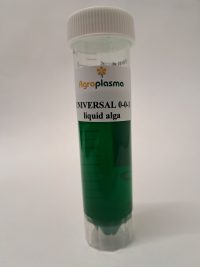
Ferticell Universal 0-0-1 liquid alga
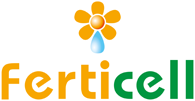
What is
Ferticell UNIVERSAL 0-0-1 ?
Ferticell UNIVERSAL 0-0-1 ?
Ferticell UNIVERSAL 0-0-1 is a unique product from a fertilizer manufacturer with breakthrough technology that is made of 16 unicellular algae and bacteria types that penetrate into the leaf instantaneously. Additionally it stabilizes the auxins and cytokinins inside the plant which is important for the plant growth and producing a homogenouse crop.
Ferticell UNIVERSAL 0-0-1 is 100% all natural and we recommend using Ferticell UNIVERSAL 0-0-1 with any fertilization program to obtain a superior crop, a more homogeneous product, and better size and sale price.
- Regenerate the soil
- Improves production
- Improves the fruit quality
- Crop protection
- Easy to use
- Natural and safe
- Improved uniformity
- Plants grow stronger and faster
- Avoids loss of flowers
- Avoids stress of transplants
- Increased root development
- Break down locked up minerals
- Improves the metabolism
- Balanced nutrients
- Stimulates foliar mass
- Very effective in critical phases
AGROPLASMA: HOW AND WHY IT WORKS
The fertilizers from the manufacturer Ferticell contain a concentrated solution of cells and cellular extracts that include algae and bacteria, being unicellular plants of natural origin.
The unique characteristic of the different types of cells used in our Ferticell is their ability to store large amounts of nutrients such as amino acids, microelements and vitamins within their cell walls and then transfer these nutrients to the plant.
CYTOPLASMIC TRANSMISSION
Cytoplasmic transmission, or intercellular exchange (ICE), is the mechanism by which the movement of nutrients from Ferticell to the plant cells occurs. ICE is most active in young living cells, particularly those found in leaves and roots.
The conditions required for cytoplasmic transmission are:
A functional connection system between two cells: plasmadesmata (strands of cytoplasm).
A surrounding medium of lower concentration than the two cells. Either the diluted intercellular space or the soil solution.
A difference in the concentration of plasmas in two adjacent cells: Ferticell cells and plant cells.
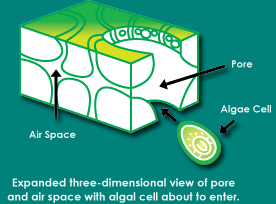
Cells in Ferticell products are considerably more concentrated than the surrounding solution. The leaf cells contain a solution which is considerably less concentrated than the fertilizer manufacturer Ferticell cells. This difference in concentration initiates the Inter-Cellular Exchange of nutrients from Ferticell into the plant’s leaves. The same process applies to the transfer of Ferticell nutrients into the plant root when products are used via irrigation. Here the Ferticell cell associates with root hairs and the plasma medium enters the soil solution in the immediate area of the hairs.
Although cells appear to be self-contained units, there are tiny pores in the cell wall, through which cytoplasm strands can pass. These strands, called plasmadesmata, play a vital role in providing an interconnection between adjacent cells in such a way that the cytoplasm is continuous between the cells.
GRAPHIC VIEW OF INTERCELLULAR EXCHANGE
If we magnify the leaf and picture it in a three-dimensional section we would see that it is composed of cells, pores and space for air and water. If we concentrate our view on a leaf pore, or stomata, the Ferticell cell is smaller than the stomata and thus can enter the plant leaf when the product is foliar applied. It passes through the stomata into spaces around various leaf cells called the spongy layers. These spaces are occupied with a diluted solution of nutrient and air. It is here that the unique benefits of Ferticell are realized, as nutrients are transferred to the plant. This transfer is a phenomenon known as the «Pressure Transference Phenomenon» or cytoplasmic streaming.
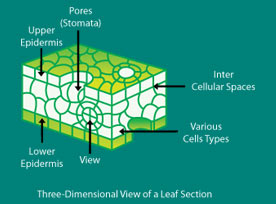
GRAPHIC VIEW OF CYTOPLASMATIC TRANSMISSION
Nutrients will flow from areas of high concentration to areas of low concentration (source to sink) to achieve a balance.
Nutrient-rich Ferticell cells of fertilizer manufacturer transfer the cytoplasm to nutrient depleted leaf cells, which in turn are transferred to other cells and plant parts for storage, growth, regeneration and reproduction.

NUTRIENT TRANSFER IN SOIL APPLICATIONS
Ferticell cells in the soil will also unlock any nutrients in the soil and transfer them to the plant. The result will be a diffusion of water into the Ferticell cell from the leaf cell. Ferticell cells, containing cytoplasm with its nutrients, will be carried along in a mass flow to the leaf cell. The mass flow will cease when enough nutrients have been moved from the Ferticell cell to the leaf cell to balance the concentration of both solutions.
The likely scenario, following the achievement of this balance is that Ferticell cells from our fertilizer manufacturer will die and release their remaining nutrients into the inter-cellular medium or soil solution. These nutrients, automatically become available for diffusion across the cell membrane by active transport.









